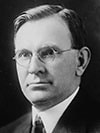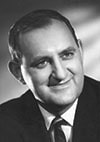Former Vice President Donald Carver, who led the United Transportation Union Yardmasters Department from 1987 until his retirement in 2003, passed away January 11, 2022, one day prior to his 79th birthday, his family announced.

Brother Carver had a 41-year career on the railroad that began when he hired out in April 1962 as a switchman on the Louisville & Nashville Railroad. He joined UTU predecessor union the Brotherhood of Railroad Trainmen (BRT) in May 1962 before becoming a yardmaster and an officer in the Railroad Yardmasters of America (RYA), rising to general chairperson and a national vice president in the 1970s in that union before its merger with UTU.
In 1987, Carver was elected UTU assistant to the president/yardmasters and he served in that capacity before being elevated to vice president in 2003. In total, 29 of Carver’s 41 years were as a union officer.
The late Jim “J.R.” Cumby, Brother Carver’s immediate successor in leading the Yardmasters Department, wrote a tribute to Carver in an issue of the UTU News published after Carver’s retirement in September 2003:
“Don was an indefatigable road warrior. When the carriers raised the qualifying days worked to seven for carrier-paid insurance, Don went to bat for our part-time officers. With assistance from the negotiating committee, Don ensured all our part-time officers working on the railroad at least one day per month retained carrier-paid insurance benefits,” Cumby wrote in the November 2003 UTU News.
Carver left “some mighty big shoes” to fill in representing the union’s members, Cumby wrote.
Carver’s role with the union hadn’t closed quite yet. In 2004, he served on a blue-ribbon committee to shape union technological efforts for the union as it headed into the 21st century.
After announcing his retirement, Brother Carver closed his final farewell column to the membership with a traditional Irish blessing:
“May the road rise up to meet you, May the wind be always at your back, May the sun shine warm upon your face, And the rain fall soft upon your fields. And until we meet again, may God hold you in the palm of His hand.”
He is survived by his wife of 59 years, Dianna Mae, and two children, the Rev. Dr. Richard Carver Jr. (Stephanie) and Marla Sanders (Chris); five grandchildren; three great-grandchildren; and his brother, David. He was preceded in death by his parents, Rev. Dr. Edward and Alene Carver, and his sister Beth Ostercamp.
A celebration of Brother Carver’s life will take place 12:30 p.m. Monday, Jan. 17, 2022, at Schoppenhorst Underwood & Brooks Funeral Home, 123 Winning Colors Dr., Mt. Washington, Ky. Interment will follow at Bethany Memorial Cemetery, 10917 Dixie Hwy., Louisville.
The SMART Transportation Division offers its sincere condolences to the Carver family, his friends and the union brothers and sisters who knew him.
Click here read Carver’s full obituary or to leave condolences.

